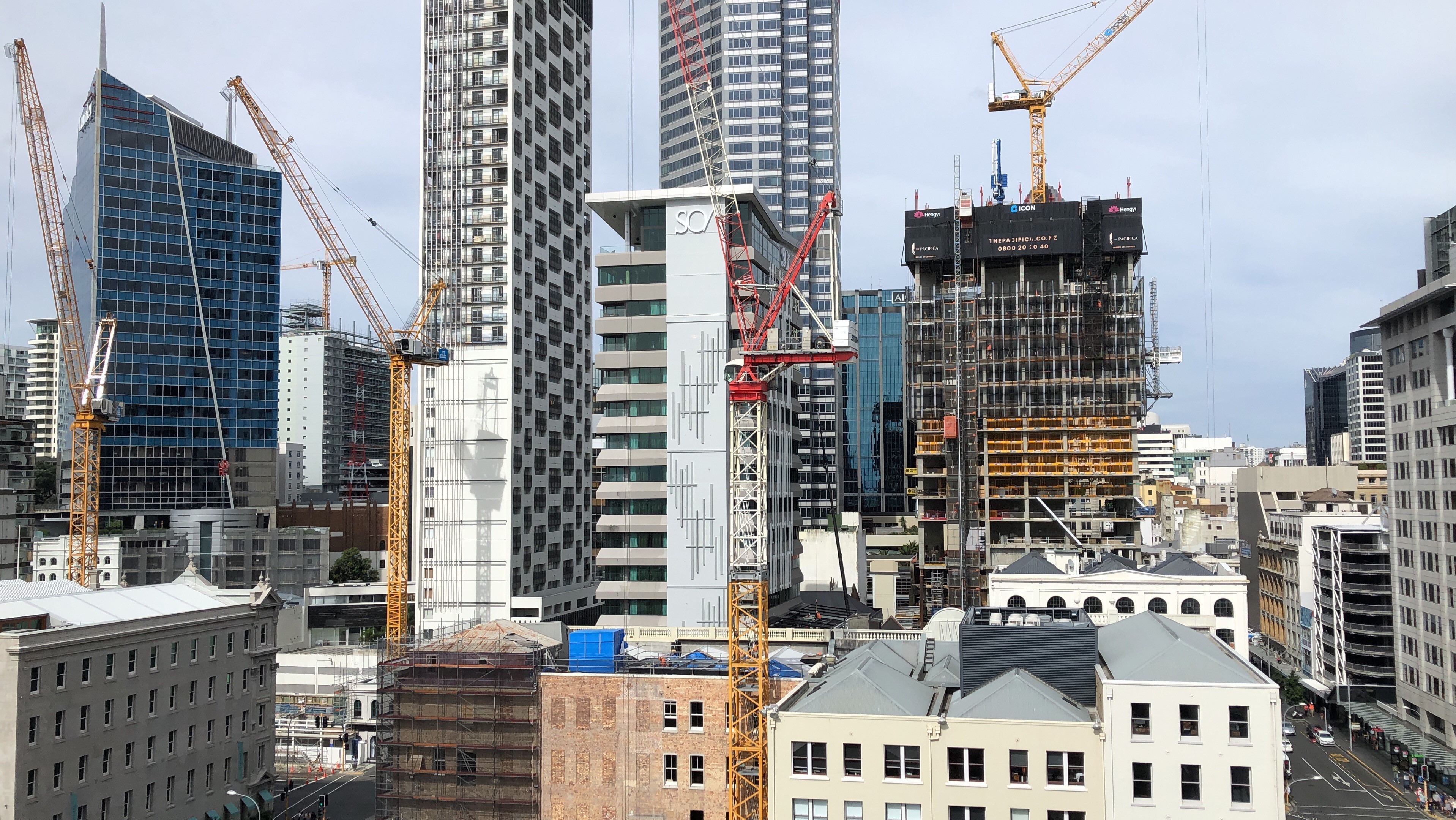
In the past decade, chartered building surveyors have become more active in commercial technical due diligence (TDD) in New Zealand.
Technical risks associated with property are, in some respects, higher here than in a country such as the UK. This is due to issues including seismic risk, less stringent building code standards, and a greater emphasis on managing initial capital costs.
Assessing buildings seismic performance
New Zealand experienced well-publicised earthquake damage in Canterbury in 2011 and Wellington in 2016, although there has been a longer history of such events.
Due to the high level of earthquake risk, buildings are assessed for seismic performance using a rating system that compares a property against the New Building Standard (NBS). Buildings that achieve only 33% of the NBS or lower are considered to be earthquake-prone. The owner is then obliged to strengthen or demolish the structure.
Aside from legal obligations, market forces come into play: 67% NBS is often regarded as a minimum by investors, insurers and lenders. Government departments and more risk-averse occupiers may insist on 80% or 100% NBS.
Buildings are assessed for their NBS rating using either an initial seismic assessment (ISA) or detailed seismic assessment (DSA). An ISA involves a considerable number of assumptions, and only suffices to identify which buildings are earthquake prone. A more detailed assessment would be recommended in most instances.
This process depends on a number of inputs and can be subjective, given there may be concealed structural components and a lack of as-built drawings. It is therefore common for engineers to calculate different results for the same building, depending on the scope of service that they have been engaged to perform by the vendor or purchaser.
Although the process should be the same for vendor and purchaser, it is generally the case that they get what they pay for. Consequently, a more detailed assessment often gives a lower NBS score, because the ISA process involves more assumptions. Even with a DSA, however, engineers can be engaged on different scopes, and this can lead to differing results.
Resource challenges can also make it difficult to procure detailed assessments – and, to a lesser extent ISAs – in the typical due diligence timescales. Vendors are therefore well advised to commission an up-to-date assessment at the outset of a sale.
The parties to a transaction could also commission a peer review of the vendor's assessment. Furthermore, purchasers can in some cases obtain reliance on the vendor's assessment, provided the engineer is willing to extend their liability. This won't always be possible, however, and even where it is there is an expectation that a fee would be payable.
'Due to the high level of earthquake risk, buildings are assessed for seismic performance using a rating system that compares a property against the New Building Standard'
Facade concerns require early advice
The preference in New Zealand for managing the initial capital costs of construction can manifest itself in poorer-quality facades, over which owners sometimes take legal action. Overarching weathertightness or building envelope warranties for commercial buildings – which would otherwise protect owners and limit developers' liabilities – are less common in New Zealand than in the UK. This increases the importance of seeking effective technical advice at TDD stage. Early assessment of the level of risk, and the optimum approach for facade due diligence, is paramount.
Yet facade specialists are in relatively short supply in New Zealand, presenting challenges when it comes to procuring timely advice for property transactions. There is still a general bias in New Zealand towards obtaining technical advice from engineers, because unless client bodies have key staff from UK backgrounds there is a lack of understanding of the kind of work that chartered building surveyors can and can't do.
Cladding panel fire resistance varies
In the past 20 years, aluminium composite panels (ACPs) have been more widely used as cladding material in New Zealand. This includes panels with expanded polystyrene (EPS) or solid polyethylene (PE) cores, and mixtures of mineral fibre with PE. The latter are more fire-resistant, and are reported to be the most commonly used type on larger buildings in the past decade. These different panel types have many different fire resistance characteristics, though, making it difficult for building surveyors to assess their effectiveness.
There have been no fires in New Zealand of the magnitude of London's Grenfell Tower or Melbourne's Lacrosse apartment building. However, some local authorities have still been concerned enough to carry out a high-level risk assessment of existing building stock, finding numerous properties clad with potentially flammable ACP products.
Cover for non-fire-rated ACP cladding is only available in Australia from a limited number of insurers. With many insurance providers in New Zealand owned by Australian parent groups, it seems possible that similar exclusions could be adopted here.
When it comes to TDD, prudent purchasers would want to establish how fire-resistant any ACPs used at a property are, because these may affect life safety and the availability of insurance. There are many uncertainties with such panels, including various levels of specification, complexity of certification, and differences between what has been specified and installed. Panels can therefore be better understood by core sampling or site surveys to assess methods of fixing. A favourable report might help secure lower insurance premiums.
In general, there is less awareness of cladding issues in New Zealand than there is in the UK and Australia. Purchasers wanting to assess this risk in proposed property transactions may therefore need to engage with vendors at an early stage to explain the reasons for their due diligence. Vendors and purchasers alike typically have limited understanding of the issue, and little opinion on it other than whether they can obtain insurance – which they can – and they are therefore happy.
Unlike in Australia, there is currently no legislative requirement to assess existing buildings in New Zealand for ACPs, and no current concerns about potentially being obliged to replace cladding. While the use of ACPs in New Zealand will have been signed off by the territorial authority, the liability would likely be shared depending on where the faults lie, which could implicate suppliers, designers, territorial authorities and contractors.
'In the past 20 years, aluminium composite panels have been more widely used as cladding material in New Zealand'
Increased interest in sustainability
The most prominent sustainability rating for non-residential buildings in New Zealand is Green Star, an adaptation of the similar system developed by the Green Building Council of Australia (GBCA). The rating broadly mirrors that of a BREEAM or LEED assessment, focusing among other factors on energy, water usage, materials and emissions.
At the time of writing, the New Zealand Green Building Council records 208 buildings rated 4 – best practice – or above. This compares with 3,189 projects similarly certified by the GBCA.
Property investors looking to buy in New Zealand might therefore expect to find a smaller pool of highly rated existing building stock, or more requirements for upgrades after acquisition to bring properties up to the desired standards. This increases the need for detailed assessments of building services installations and other sustainability-related features, to inform a robust capital expenditure plan before acquisition.
While sustainability is becoming more important in New Zealand, as with cladding, the country is short of skilled assessors. Purchasers are therefore likely to need to identify suitable providers such as building surveyors at an early stage, to assess buildings for their sustainability credentials.
New Zealand has also made no commitments to assessing the energy performance of existing building stock. Sustainability and energy ratings are voluntary, except for requirements introduced in 2021 for government agencies to achieve some minimum standards for new-builds or newly leased space of a certain size. There is no equivalent of the UK energy performance certificate (EPC) for freehold or leasehold transactions.
Assessing asbestos risk
Where there is a reasonable risk of respirable asbestos in a workplace, New Zealand legislation obliges any such material to be identified and a management plan produced. Worksafe New Zealand asserts that this risk is higher for properties constructed before 2000.
Although these requirements came into effect in 2018, it is not uncommon for commercial properties – particularly those owned by private investors – to have no asbestos management plan on record. The potential maintenance and refurbishment costs for dealing with asbestos are high, and there is also a need to comply with relevant health and safety legislation. Prudent purchasers would thus be well advised to request asbestos survey reports from vendors at an early stage in any proposed transaction. However, it is not a mandatory requirement for sales and purchases.
How due diligence can ease transactions
Due diligence timescales for property transactions in New Zealand are typically 15 or 20 working days, in keeping with other jurisdictions. Given the skill shortages in the consultancy sector here, though, it can be challenging to procure and mobilise the necessary specialists to inspect and report on properties in the time required.
The discovery of material issues or absences of documentation would ideally result in an extended TDD period. But while the chartered surveyor will closely follow the protocols set out in the current edition of Technical due diligence of commercial property, and may well recommend an extension of the due diligence period, it is ultimately a matter on which the contracting parties must take a view.
Although it is less common for vendors to commission due diligence reports ahead of a transaction in New Zealand than it is in Australia or the UK, this approach is on the increase. One obvious advantage is earlier mobilisation of the necessary consultants, while it also means the vendor gains a better understanding of the property's physical condition.
If the reports are disclosed and assignable to prospective purchasers, then all parties can work from a common understanding. This can make transactions, particularly large or complex ones, significantly more efficient.
Phil Overend MRICS is an executive director in the real-estate advisory team at PwC New Zealand
Contact Phil: Email
Related competencies include: Building pathology, Fire safety, Inspection, Legal/regulatory compliance

